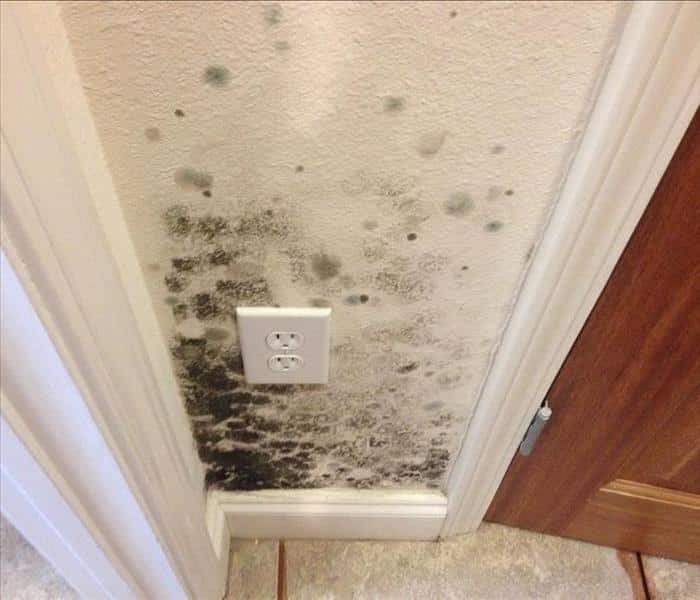Is Mold on Sheetrock Dangerous?

Mold spores can rapidly form large colonies when the right conditions are met. Mold thrives on food, moisture, and humidity, and it often grows well on cellulose-based products like drywall. Mold on drywall can be harmful, affecting both your health and the structural integrity of your home.
Mold on drywall or sheetrock can spread quickly if not addressed immediately. This article explains how mold grows on drywall, why it is dangerous, and steps you can take to prevent it.
How Does Mold Grow on Drywall?
Mold can grow on various surfaces, especially porous ones. Porous surfaces attract moisture, creating an ideal environment for mold growth. Even dirt and grime on non-porous surfaces can trap moisture, allowing mold to grow. Drywall and sheetrock walls can easily develop mold in environments with high humidity and moisture.
The wood particles in drywall provide food for mold and trap moisture, accelerating its growth. Because of its porous nature, drywall is an ideal area for mold to spread quickly. Water can easily move through the softwood particles in drywall, allowing mold to grow in any direction. Water leaks can also lead to mold on drywall, and if not addressed promptly, they can make the problem difficult to manage.
What Does Mold on Sheetrock Look Like?
Mold on sheetrock appears as dark spots or patches and typically thrives in areas with high moisture levels. It often grows in places with little air circulation or lots of moisture, such as bathrooms, basements, kitchens, and laundry rooms.
Why is Mold on Sheetrock Dangerous?
Mold can spread rapidly on drywall, especially if it covers a large area of your home. As long as conditions are favorable, mold will grow and multiply quickly. The spores can become airborne and spread to other areas, including your HVAC system, furniture, and crawl spaces. If not addressed promptly, the problem can worsen, leading to higher costs for repairs and mold remediation.
Mold can cause allergic reactions when inhaled or when it comes into contact with your skin and eyes. Your body treats airborne mold spores as foreign invaders, producing antibodies to fight them. This can lead to symptoms like sneezing, runny nose, watery eyes, and coughing. Common molds that cause allergies include Aspergillus, Alternaria, Penicillium, and Cladosporium.
While mold spores are not corrosive, they can cause significant damage to drywall. Mold can stain and rot the drywall, so you may need to replace it to eliminate the mold fully. Mold spores can move through the air and reach other areas of your home, such as carpets and furniture. This means that you may need to replace more than just the drywall.
According to the United States Environmental Protection Agency, mold can lead to serious health issues, including asthma attacks, respiratory infections, and lung conditions. It can exacerbate existing asthma or trigger an attack, making it difficult to breathe without an inhaler. Mold can also cause diseases such as hypersensitivity pneumonitis, where inhaled mold spores cause lung inflammation.
How to Get Rid of Mold on Sheetrock
To get rid of mold on drywall, first, fix any leaks that might have caused the problem. Water leaks create the moist environment mold needs to grow, so addressing these leaks is crucial. You can attempt DIY mold removal if the affected area is less than ten square feet. For surface mold, which is on top of the paint and covers a small area, you can remove it by scrubbing with a mold cleaner. If the mold has penetrated the drywall, removal becomes more difficult because of drywall’s porous nature. Mold growing inside the drywall often requires professional intervention or replacing the affected drywall.
For extensive mold growth, if the mold covers a large area or has penetrated deeply into the drywall, the best solution is to remove the infested drywall and replace it with new drywall. This not only eliminates the existing mold but also helps prevent future mold problems. Mold on drywall is dangerous because it can cause serious health issues and damage your property. Mold can lead to respiratory problems, allergic reactions, and other health concerns. It can also weaken the structural integrity of your home.
To prevent mold from recurring, ensure all leaks are fixed promptly. Replace infested drywall with new drywall to eliminate mold and prevent its return. Regularly check for signs of mold and address any moisture issues quickly. Replacing drywall with mold can be expensive at first. However, it can save you money and time in the long run. This is because it helps prevent future mold issues and keeps you and your property healthy.
If you’re dealing with mold on your drywall, contact ROA Drywall for professional solutions. Our team specializes in mold removal and drywall repair or replacement to ensure your home is safe and healthy. Don’t let mold compromise your property—reach out to ROA Drywall today for expert assistance.

